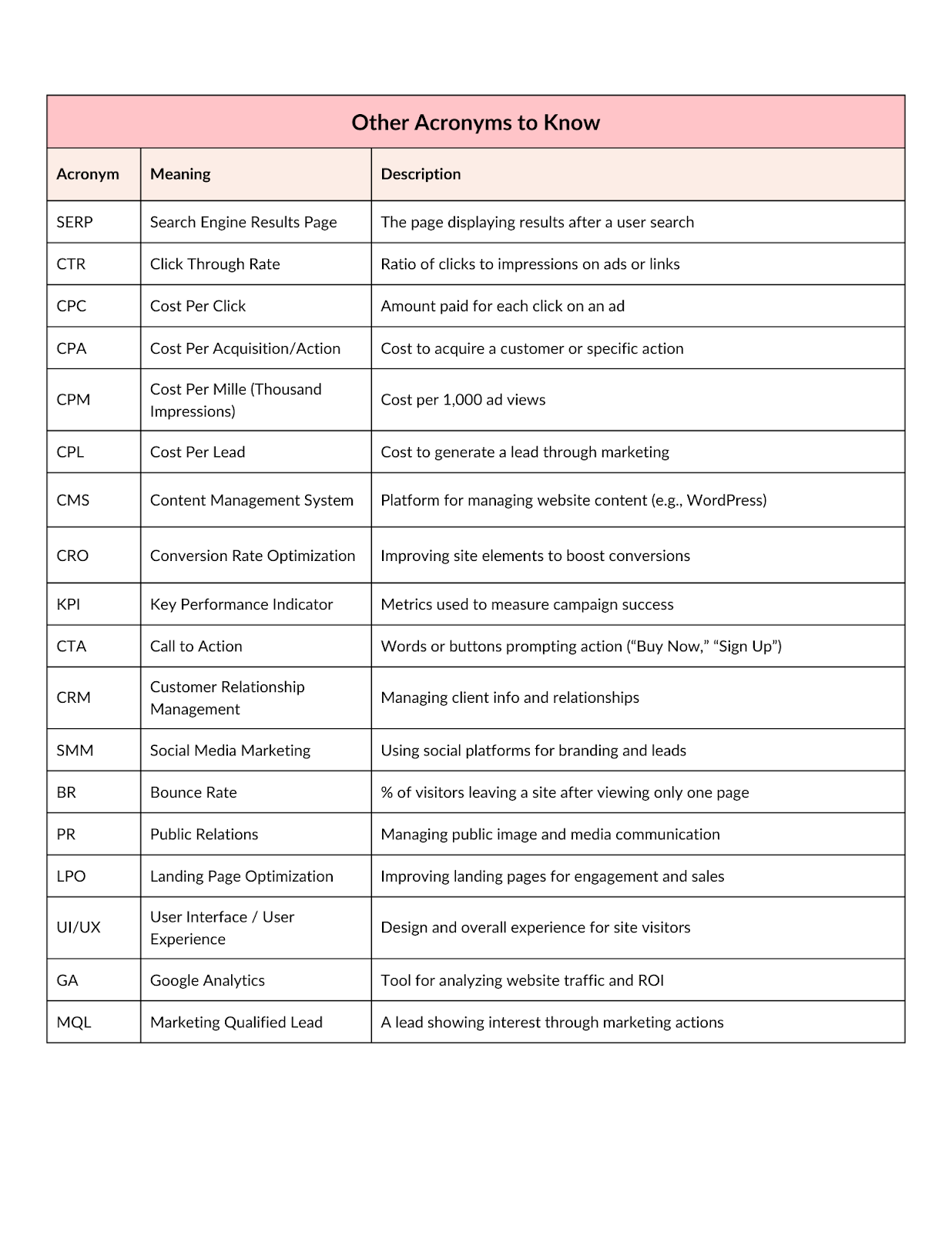
Digital marketing is overflowing with acronyms. Three of the most critical are SEO, SEM, and PPC—but understanding the difference is key to crafting a successful online strategy.
SEO stands for Search Engine Optimization. It’s the art and science of earning higher rankings in organic (unpaid) search engine results. Marketers leverage SEO by optimizing website content, structure, technical performance, and authority (such as backlinks) so their site shows up more often for relevant search queries. Unlike paid advertising, SEO delivers lasting traffic but typically requires patience and process to achieve results.
SEM refers to paid strategies for increasing a site’s visibility in search engines—primarily through paid advertisements. While SEM originally encompassed both SEO and paid search, it’s now most often used to mean paid campaigns via platforms like Google Ads or Bing Ads. SEM quickly drives targeted traffic and can rapidly raise brand awareness or sales.
PPC stands for Pay-Per-Click, a type of advertising model where marketers pay only when someone clicks on their ad. PPC is a core SEM strategy, offering control over budget, audience targeting, and measuring direct ROI. It drives fast results and is ideal for highly competitive keywords, launches, or limited-time offers.
While SEO focuses on long-term, sustainable organic traffic, SEM and PPC push for immediate, targeted visibility. Most marketers combine these approaches: using PPC for new products or campaigns and SEO for ongoing growth. Together, they maximize a brand’s online presence.
Here are additional must-know acronyms for navigating the digital marketing world:

Digital marketing’s alphabet soup is vast. These acronyms not only streamline industry language but help teams make smarter, data-driven decisions for growth.